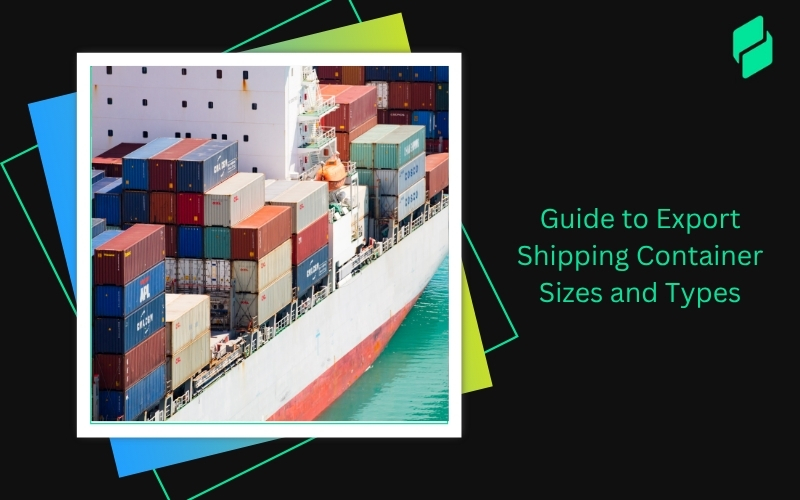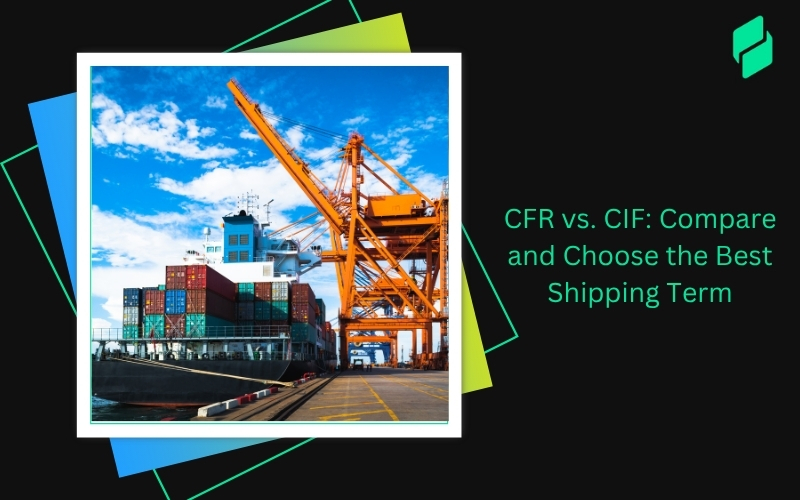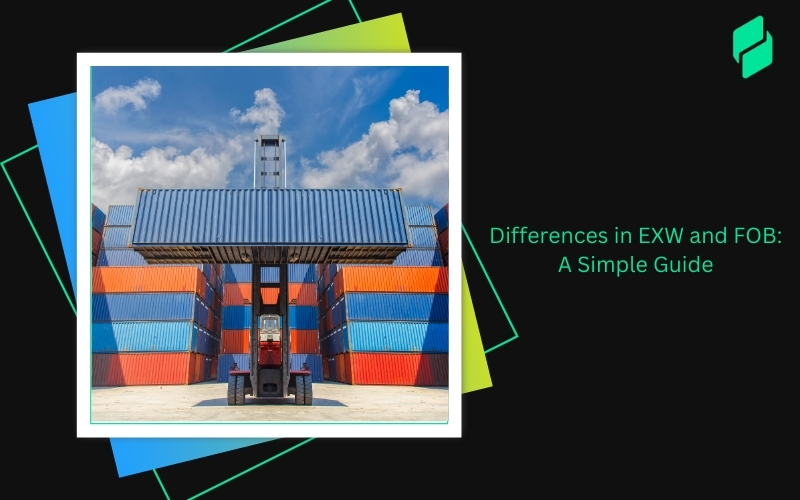What exactly are FCA Incoterms in ocean shipping? Simply put, rules apply when a seller is responsible for the initial part of shipping goods, especially abroad.
These rules are crucial for different shipping types, whether a full container load (FCL), a less-than-container load (LCL), or air freight.
In this article, we'll break down the details of FCA Incoterms, including when to use them and their pros and cons. Understanding these rules is critical for international trade, ensuring smoother and more efficient shipments.
Optimize your business: use unlimited savings with Pazago fulfilled now!
Get Started ->Definition and Explanation of FCA (Free Carrier)
FCA, or Free Carrier, is a crucial term in global trade. It's an agreement where the seller delivers the goods, cleared for export, to a carrier chosen by the buyer at a specified location.
The risk and responsibility shift from the seller to the buyer at this point. Understanding FCA is essential for shipping a small package or a container load.
Overview of the Responsible Parties Under FCA: Sellers and Buyers
In the FCA arrangement, both sellers and buyers have clear responsibilities. The seller takes care of the goods until they are handed over to the carrier, while the buyer takes over from that point onwards.
This includes arranging transport and handling all the costs involved. It's like a relay race in shipping form – the seller runs the first leg, and the buyer takes the baton to complete the race.
Importance of Understanding Incoterms 2020 Rules for Global Trade
Why should you care about Incoterms 2020 rules, including FCA? These rules are the language of international shipping, helping to avoid misunderstandings and disputes.
By knowing the rules, you can ensure smoother transactions, more explicit contracts, and more efficient shipping. It's like having a roadmap for global trade – it won't prevent all bumps in the road, but it sure makes the journey more predictable.
Alright, are you confident about the basics? Let’s amp it up and dissect who needs to do what under FCA.
Key Responsibilities in FCA
Navigating the world of FCA Incoterms can feel like a maze. But don't worry; we're here to guide you through the key responsibilities of both sellers and buyers. It's all about ensuring a smooth and successful transaction.
Let's consider a real-world example to understand the concept of FCA Incoterms:
Example
An Indian textile manufacturer based in Mumbai has received an order from a clothing retailer in France. They agree to use FCA Incoterms for the transaction, with the Jawaharlal Nehru Port in Mumbai as the named place of delivery.
Seller's Responsibilities (Indian Textile Manufacturer)
- Documentation: Prepare all necessary commercial invoices and documentation for export.
- Packing: Properly package the textiles for safe transportation.
- Export Formalities: Obtain the required export license and complete all export formalities.
- Delivery: Transport the textiles to the Jawaharlal Nehru Port and load them onto the carrier chosen by the buyer.
- Proof of Delivery: Provide evidence of delivery once the goods are handed over to the carrier.
Buyer's Responsibilities (French Clothing Retailer)
- Payment: Make payment for the textiles according to the sales contract.
- Transport: Arrange and pay for the shipping from the Jawaharlal Nehru Port to France.
- Insurance: Obtain insurance for the textiles during their journey to France.
- Import Formalities: Handle all import formalities upon the textiles' arrival in France.
- Unloading: Unload the textiles at the destination in France.
Outcome
By following the FCA Incoterms, both the Indian textile manufacturer and the French clothing retailer have a clear understanding of their responsibilities.
The manufacturer ensures the textiles are ready and delivered to the port in Mumbai, while the retailer takes over from there, managing the transportation and import process into France.
This example demonstrates how FCA Incoterms facilitate international trade by clearly defining the roles and responsibilities of the seller and buyer in different countries.
Have you got all that? Great! Now, let's explore how FCA works well with different transportation modes because who doesn't love a bit of versatility?
FCA Flexibility Across Transportation Modes
Have you ever considered how versatile FCA Incoterms are regarding different modes of transportation? They're incredibly adaptable, making them a perfect fit for all your shipping needs, whether by air, sea, road, or rail.
Suitability of FCA for Various Transportation Modes
FCA Incoterms stand out for their flexibility. They are designed to be used across various transportation modes, ensuring that your goods can be shipped efficiently, regardless of your chosen method.
This adaptability is a significant advantage in the fast-paced world of global trade, as it allows you to tailor your shipping strategy to suit your specific requirements.
Specific Considerations for Containerized Freight Under FCA
When it comes to shipping containerised freight under FCA, there are some essential points to consider:
- Named Place of Delivery: Specifying where the goods will be handed to the carrier is crucial. This could be a terminal, port, or another agreed-upon location.
- Risk Transfer: The point of delivery is also where the risk and responsibility shift from the seller to the buyer. Clear communication and agreement are vital to avoid any disputes or misunderstandings.
- Container Handling: Both parties should clearly understand who is responsible for loading and unloading the containers, as this can vary depending on the agreed terms.
With FCA's adaptability across various transportation modes, Pazago's tools can be particularly beneficial in choosing the most cost-effective and efficient shipping options for your trade needs."
So, we've seen FCA in action. But as with anything, it’s not all sunshine and rainbows. Let’s weigh the good against the not-so-good.
Advantages and Disadvantages of FCA
When shipping goods, choosing the right Incoterms can make a significant difference. FCA (Free Carrier) is a popular choice, but is it right for you? Let's break down the advantages and disadvantages for both sellers and buyers.
Advantages of FCA
For Sellers
- Limited Liability: Once the goods are delivered to the named place, the seller's responsibility ends, minimising their risk.
- Clear Responsibilities: The seller has a clear set of obligations, making the shipping process straightforward.
- Export Formalities: The seller is responsible for export clearance, which they may be more familiar with compared to import regulations in the buyer's country.
For Buyers
- Control Over Shipping: Buyers can choose their carrier and manage the shipping process, potentially reducing costs.
- Flexibility: FCA is suitable for various modes of transport, providing buyers with multiple options.
- Simplicity: With a clear distinction of responsibilities, buyers can plan their logistics more efficiently.
Disadvantages of FCA
For Sellers
- Limited Control: Once the goods are handed over, the seller has no control over the shipping process.
- Dependency on Buyer: The seller relies on the buyer to arrange shipping from the named place, which can be unpredictable.
For Buyers
- Increased Responsibility: Buyers are responsible for all aspects of shipping after the goods are handed over, including transport, insurance, and import clearance.
- Risk Exposure: The buyer assumes the risk once the goods are delivered to the carrier, which can be a concern if the goods are not adequately insured.
- Complexity in Logistics: Buyers must understand logistics and customs procedures well to manage the shipping process effectively.
Navigating FCA's advantages and challenges becomes more straightforward with Pazago's insightful platform, which offers strategies and solutions tailored to sellers' and buyers' unique needs.
Are you feeling like a pro yet? Before you answer, let's see how FCA compares to other prominent players in the Incoterms world.
Comparison with Other Incoterms like EXW, FOB, and CIP
The alphabet soup of Incoterms can be overwhelming when searching for international trade. How does FCA compare to other popular terms like EXW, FOB, and CIP? Let's break it down and make it crystal clear.
FCA vs. EXW (Ex Works)
- Responsibility: FCA shifts more responsibility to the seller compared to EXW. Under EXW, the buyer is responsible for shipping from the seller's premises. FCA, on the other hand, requires the seller to deliver the goods to a predetermined location.
- Risk: The risk transfer point in FCA is more favourable for the seller than EXW, as it occurs earlier in the shipping process.
FCA vs. FOB (Free On Board)
- Loading: Unlike FCA, where the seller's responsibility ends once the goods are handed over to the carrier, FOB requires the seller to load the goods onto the vessel at the port of shipment.
- Risk Transfer: In FOB, the risk is transferred to the buyer once the goods are on board the vessel, which is later than in FCA.
FCA vs. CIP (Carriage and Insurance Paid To)
- Insurance: The critical difference between FCA and CIP is the insurance requirement. CIP mandates that the seller must provide insurance for the goods during transport, whereas in FCA, the buyer typically arranges the insurance.
- Transport Costs: Under CIP, the seller is responsible for the carriage costs to a named destination, which is not the case with FCA.
You're cruising now! But how does all this fit into the grand tapestry of international trade? Let’s dive in.
FCA Agreements and International Trade
Navigating the seas of international trade can be daunting, but understanding FCA Incoterms can be your compass. Let's explore why FCA is critical in global agreements and how it can streamline your export and import processes.
Criteria for Choosing FCA in International Agreements
When deciding whether FCA is the right choice for your international agreement, consider the following:
- Control: If the buyer wants more control over the shipping process, FCA is an excellent choice as it allows them to select the carrier and manage the transportation.
- Cost Efficiency: FCA can be cost-effective for buyers as they can negotiate better shipping rates directly with carriers.
- Risk Management: Sellers might prefer FCA as it limits their risk to the delivery point, typically in their home country.
Choosing the right Incoterms for international agreements can significantly impact your trade success. Platforms like Pazago provide trade management tools, insights, and data that can guide businesses in making informed decisions that align with their strategic goals.
The Role of FCA in Export and Import Documentation
FCA simplifies the documentation process in international trade:
- Clear Responsibilities: With FCA, export and import documentation responsibilities are divided between the seller and buyer, reducing confusion.
- Export Formalities: The seller is responsible for export clearance, ensuring that the goods comply with local regulations before they are handed over to the buyer's carrier.
- Import Readiness: Buyers need to ensure that they have all the necessary import documentation ready, as they take over responsibility once the goods are delivered to the carrier.
Considerations for Using FCA with Letters of Credit
When using letters of credit (LC) in transactions involving FCA, keep these points in mind:
- Terms Alignment: Ensure that the terms of the LC align with the FCA agreement, particularly regarding the named place of delivery and the documentation required for payment.
- Timing: The timing of the handover and the presentation of documents under the LC should be carefully coordinated to avoid discrepancies.
- Documentation Accuracy: Accurate and complete documentation is crucial for a smooth transaction under FCA terms, especially when a letter of credit is involved.
Feeling a little overwhelmed? Don't worry. Let's take a step back and consider the bigger picture with Incoterms 2020.
What are Incoterms 2020?
Have you ever wondered about the rules that govern the intricate dance of global shipping? Enter Incoterms 2020, the latest set of international commercial terms published by the International Chamber of Commerce (ICC).
These terms are the choreographers of international trade, dictating the movements of goods from seller to buyer.
Understanding Incoterms 2020
Incoterms are like the traffic signals of shipping contracts. They determine crucial details such as the point of delivery, the transfer of ownership, and who bears the cost and risk during different stages of transportation. Updated every decade, the 2020 edition brings clarity and precision to global trade practices.
The 11 Incoterms of 2020
The Incoterms 2020 are divided into two categories based on the mode of transport:
For Any Mode of Transport
- EXW (Ex Works): The buyer takes full responsibility for the seller's premises.
- FCA (Free Carrier): The seller delivers to a carrier the buyer chooses.
- CPT (Carriage Paid To): The seller pays for a carriage to a destination.
- CIP (Carriage and Insurance Paid To): Similar to CPT, the seller also covers insurance.
- DPU (Delivered at Place Unloaded): The seller delivers and unloads at the named place.
- DAP (Delivered at Place): The seller delivers to a named place, but the buyer unloads.
- DDP (Delivered Duty Paid): The seller delivers with all duties paid, excluding unloading.
For Transport by Sea and Inland Waterway
FAS (Free Alongside Ship): The seller delivers goods alongside the ship at the named port.
- FOB (Free on Board): The seller loads the goods on the ship at the named port.
- CFR (Cost and Freight): The seller pays for the carriage to the named port.
- CIF (Cost, Insurance & Freight): Similar to CFR, the seller also covers insurance.
Critical Update in Incoterms 2020
A significant change in the 2020 edition is the provision allowing the buyer to instruct the carrier to issue a Bill of Lading (BOL) to the seller after loading the goods.
This BOL is crucial for sellers to satisfy the terms of a letter of credit, ensuring that they can prove the goods were loaded and comply with the sales contract.
Conclusion
Navigating international trade can be complex, but understanding FCA Incoterms can simplify the journey. These terms clarify responsibilities, ensuring smoother global transactions. By embracing FCA, you gain flexibility and clarity in shipping, minimising risks and costs.
Knowledge of FCA empowers you to make informed decisions and negotiate better deals, steering your business toward success. Embrace FCA Incoterms, and let them guide your path in the dynamic world of international trade.
Embracing FCA Incoterms with the proper knowledge and tools, like those provided by Pazago, can significantly ease and optimise your international trade ventures.


.png)








